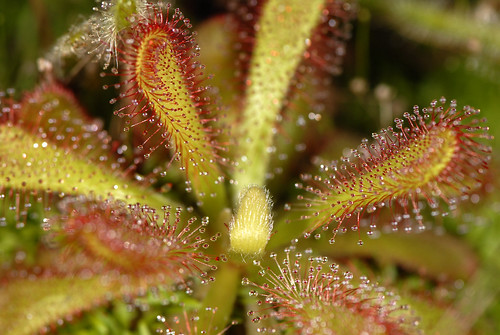

Many tuberous sundews grow as rosettes of flat leaves pressed against the soil. Fragrant flowers are formed after the leaves have finished growing. The flowers are usually white, and appear in either multiple, single blooms or are clustered. The curious, climbing Drosera can grow many feet and tiny leaves can stick to other plants with their tentacles. Drosera macrantha is easy to grow from seed. D. macrantha grows to four or five feet and produces one-inch white or pink flowers. The showy bloom cycle appears in winter and spring and you can keep your plant in a gallon-sized pot for years. Drosera cistiflora is famous for its large flowers. When it is several years old the plant can produce a flower two to three inches across. The flower color can range from purple to rose to white to deep red. Seeds are rarely produced, but you can propagate it by taking cuttings of the early rosetted leaves.
A smaller species is D. trinervia with small white flowers. A rare sundew native to
